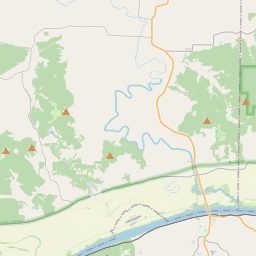The Lewis and Clark Expedition Across Missouri
Historical marker location:
Hermann, Missouri







© OpenStreetMap contributors
A brief timeline of the Lewis and Clark Expedition
- 1803: President Thomas Jefferson commissions Meriwether Lewis, his personal secretary, to lead an expedition to explore the western territories of the United States and find a practical route to the Pacific Ocean.
- 1804: Lewis meets up with William Clark, a former army officer and experienced explorer, in Kentucky. They assemble a team of over 30 men and set out on the journey up the Missouri River.
- 1805: The expedition reaches the Rocky Mountains and crosses the Continental Divide. They build Fort Clatsop on the Pacific coast and spend the winter there, before returning east in the spring of 1806.
- 1806: Lewis and Clark split up to explore different routes on their way back to St. Louis. They reunite in September and return to civilization, where they are celebrated as national heroes.
- 1807: The Lewis and Clark Expedition publishes an official account of their journey, called the "History of the Expedition Under the Command of Captains Lewis and Clark," which becomes a bestseller and helps to promote westward expansion.
More history nearby
The Gateway Arch, located in St. Louis, is the tallest arch in the world, standing 630 feet tall. It was built as a monument to the westward expansion of the United States and opened to the public in 1967.
About Gasconade County
Gasconade County Timeline
Gasconade County, Missouri, located in the heart of the state, has a rich and intriguing history that spans over two centuries. The area was first inhabited by Native American tribes, such as the Osage and the Missouri, who relied on the abundant natural resources and fertile lands for their livelihoods. European settlers began to arrive in the area in the late 1700s, with the French being the first to establish trading posts along the Gasconade River.
In 1821, Gasconade County was officially established as one of the original counties of the newly-formed state of Missouri. The county was named after the Gasconade River, which runs through its western border. The early settlers primarily relied on agriculture, and leading industries included farming, logging, and milling.
During the American Civil War, Gasconade County saw its share of turmoil. As a border state, the county was plagued by both Confederate and Union forces, resulting in significant destruction and loss. Battle sites such as the Battle of the Little Boeuf and the Battle of Second Springfield left lasting scars on the county's history.
In the late 19th and early 20th centuries, the county experienced significant economic growth with the arrival of the railroads. Industries such as timber, mining, and manufacturing fueled the local economy. Today, Gasconade County is renowned for its scenic beauty, historic charm, and thriving tourism industry, attracting visitors with its wineries, outdoor recreational activities, and annual festivals. The county's rich history is carefully preserved in its historic architecture, museums, and landmarks, serving as a reminder of its vibrant past.
In 1821, Gasconade County was officially established as one of the original counties of the newly-formed state of Missouri. The county was named after the Gasconade River, which runs through its western border. The early settlers primarily relied on agriculture, and leading industries included farming, logging, and milling.
During the American Civil War, Gasconade County saw its share of turmoil. As a border state, the county was plagued by both Confederate and Union forces, resulting in significant destruction and loss. Battle sites such as the Battle of the Little Boeuf and the Battle of Second Springfield left lasting scars on the county's history.
In the late 19th and early 20th centuries, the county experienced significant economic growth with the arrival of the railroads. Industries such as timber, mining, and manufacturing fueled the local economy. Today, Gasconade County is renowned for its scenic beauty, historic charm, and thriving tourism industry, attracting visitors with its wineries, outdoor recreational activities, and annual festivals. The county's rich history is carefully preserved in its historic architecture, museums, and landmarks, serving as a reminder of its vibrant past.
Gasconade County Timeline
This timeline provides a concise overview of the key events in the history of Gasconade County, Missouri.
- 1818 - Gasconade County established by the Missouri General Assembly
- 1825 - The first courthouse is built in Gasconade County
- 1837 - Hermann, the county seat, is laid out and named after Hermann der Cherusker, a Germanic leader
- 1846 - Construction of the first railroad in Gasconade County begins
- 1852 - The Gasconade Bridge, the longest covered bridge on the Missouri River, is completed
- 1861-1865 - Gasconade County residents participate in the American Civil War
- 1914-1918 - Gasconade County residents serve in World War I
- 1930s - The Great Depression affects Gasconade County, leading to economic challenges
- 1941-1945 - Gasconade County residents serve in World War II
- 1961 - The construction of the Bagnell Dam on the Osage River is completed
- 1993 - A major flood causes significant damage in Gasconade County
- 2019 - Gasconade County celebrates its bicentennial